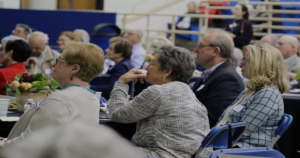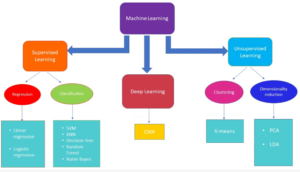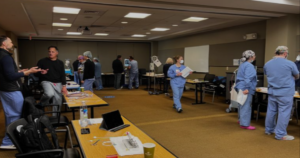The Orchestra of Nonverbal Communication:
Forget the myth of the born communicator, effortless in their charm and captivating presence. The truth is, the symphony of nonverbal communication is a melody anyone can learn to play, with a touch of curiosity and a dedication to practice. This orchestra unfolds within you, through your posture, gestures, expressions, and the subtle music of your voice.
Conducting with Posture:
Imagine your posture as the silent conductor, orchestrating the flow of your message. Stand tall, shoulders squared, and project confidence, commanding attention like a maestro leading a grand concerto. Lean forward with open arms, inviting trust and connection, creating a welcoming space for your dialogue to unfold. Remember, every tilt of the head, every subtle shift in your stance, adds nuance to your silent performance.
Dancing with Gestures:
Gestures are the lively dancers in your nonverbal ensemble. Open palms, like flags fluttering in the wind, signal honesty and openness. A raised eyebrow, a mischievous punctuation mark, sparks intrigue and curiosity. Clenched fists, however, hint at hidden tension, a discordant note in the otherwise harmonious tapestry of your communication. Master the art of these silent movements, and your message will come alive, painted with vibrant brushstrokes of meaning.
The Canvas of Your Face:
Think of your face as a dynamic canvas, not just for makeup and artistry, but for the ever-changing expressions that play out in life’s grand performance. A genuine smile blossoms like a sunflower, radiating warmth and trust, building bridges between you and your audience. A furrowed brow casts a shadow of concern, a stormy sky before the rain, hinting at worry or disapproval. But it’s the fleeting micro-expressions, the delicate brushstrokes of emotions across your features, that truly reveal the depths of your feelings. Learn to decipher these silent whispers, and you’ll become a master interpreter of the unspoken narratives unfolding before you.
Windows to the Soul:
The Power of Eyes Your eyes, like windows to your soul, speak volumes without uttering a word. A steady, unwavering gaze reflects confidence, a lighthouse guiding your audience through your message. Crinkled eyes sparkling with a genuine smile build bridges of trust, inviting connection and understanding. But remember, the rhythm of eye contact is a delicate dance. A prolonged stare can feel overwhelming, while a swift look away offers space to breathe. Mastering this choreography allows you to create a shared space of rapport and mutual respect.
The Versatile Instrument of Your Voice:
Your voice is a versatile instrument, capable of playing countless melodies. A warm, gentle tone, like a caress on the air, fosters intimacy and trust, drawing your audience closer to your message. A monotone drone, however, can lull them into disengagement. Inflections, the rises and falls in your vocal melody, punctuate your message, highlighting key points and adding emphasis. A well-timed pause, a pregnant rest in the musical score, builds anticipation and draws your listener in deeper. And don’t underestimate the power of volume. A whisper can be as impactful as a shout, depending on the moment. A hushed tone shared in confidence can spark intrigue, while a bold projection commands attention and demands action.
Navigating Your Personal Bubble:
Imagine an invisible sphere surrounding you, a personal bubble that expands and contracts like a living thing. In close-knit cultures, this bubble shrinks, welcoming others into warm embraces and close conversations. In formal settings, it inflates, demanding a respectful distance and creating a sense of professionalism. Learn to dance with this bubble, expand it for warmth and connection, contract it for professionalism, and watch as your interactions become richer and deeper.
Decoding the Symphony: A Conversation of Cues:
Nonverbal communication isn’t just about sending messages; it’s about actively listening and deciphering the silent orchestra playing around you. Observe the subtle shifts in posture, the fleeting expressions that dance across faces, and the nuances of vocal inflection. Each twitch, each glance, each whisper contributes to the unspoken narrative unfolding before you. Become a master detective of these cues, and you’ll gain the power to adapt your communication in real-time, responding with empathy, understanding, and genuine connection.
Reciprocity of Silence: A Conversation for Two:
The beauty of nonverbal communication lies in its reciprocity. By becoming fluent in this silent language, you create a two-way conversation, where your responses, both verbal and nonverbal, guide the flow of the interaction. A reassuring smile can offer solace, a confident lean forward demonstrates engagement, and a mirrored posture builds trust. You become a conductor, not just of your own message, but of the entire symphony of communication, shaping the experience for both yourself and your audience.
Mastering the Melody: From Novice to Maestro:
Just as every orchestra needs countless hours of rehearsal before delivering a flawless performance, mastering the art of nonverbal communication takes dedication, practice, and a sprinkle of grace. The journey is lifelong, replete with occasional off-key notes and stumbles in choreography. But within each misstep lies an opportunity to refine, to listen, and to grow as a communicator.
Embrace the awkward silences as fertile ground for understanding. A well-timed pause, instead of a desperate scramble for words, can speak volumes of respect and active listening. Don’t fret over the misplaced gesture or the fleeting flicker of annoyance that crossed your face; acknowledge it, perhaps with a sheepish grin, and move on. The audience, like skilled musicians themselves, often appreciates authenticity over a meticulously scripted performance.
Seek out mentors, not just in the polished figures on stage, but in the everyday interactions that unfold around you. Observe the seasoned negotiator whose posture subtly shifts from dominance to collaboration, the teacher who weaves a tapestry of warmth with eye contact and open arms, the friend whose voice dips into soothing tones of comfort. Each encounter holds a lesson, a brushstroke on the canvas of your silent symphony.
Practice, in a safe space with trusted friends, in the mirror’s reflection, or simply by observing the world with curious eyes. Mimic the masters, experiment with your own gestures, and listen to the feedback you receive, not with defensiveness, but with the eagerness of a student ready to learn. Remember, even the most virtuosic conductors once held instruments with clumsy hands, their melodies a cacophony before years of dedicated practice.
Finally, embrace the joy of improvisation. Nonverbal communication isn’t a rigid script; it’s a dynamic jazz solo, responding to the cues of the moment. Let your gestures flow, your voice dance and your eyes sparkle with the ever-changing rhythm of the interaction. This fluidity, this willingness to adapt and play by ear, is the mark of a true maestro, a communicator who conducts the silent symphony with authenticity, grace, and a profound understanding of the unspoken language that binds us all.
So, step onto the stage of life, embrace the imperfections, and let your silent orchestra play. With each brushstroke, each note, and each unspoken word, you’ll weave a richer tapestry of connection, leaving a lasting melody in the hearts of those around you. The spotlight awaits, maestro. Take a deep breath, raise your metaphorical baton, and conduct your message with intention. Let the music of your presence fill the world.











